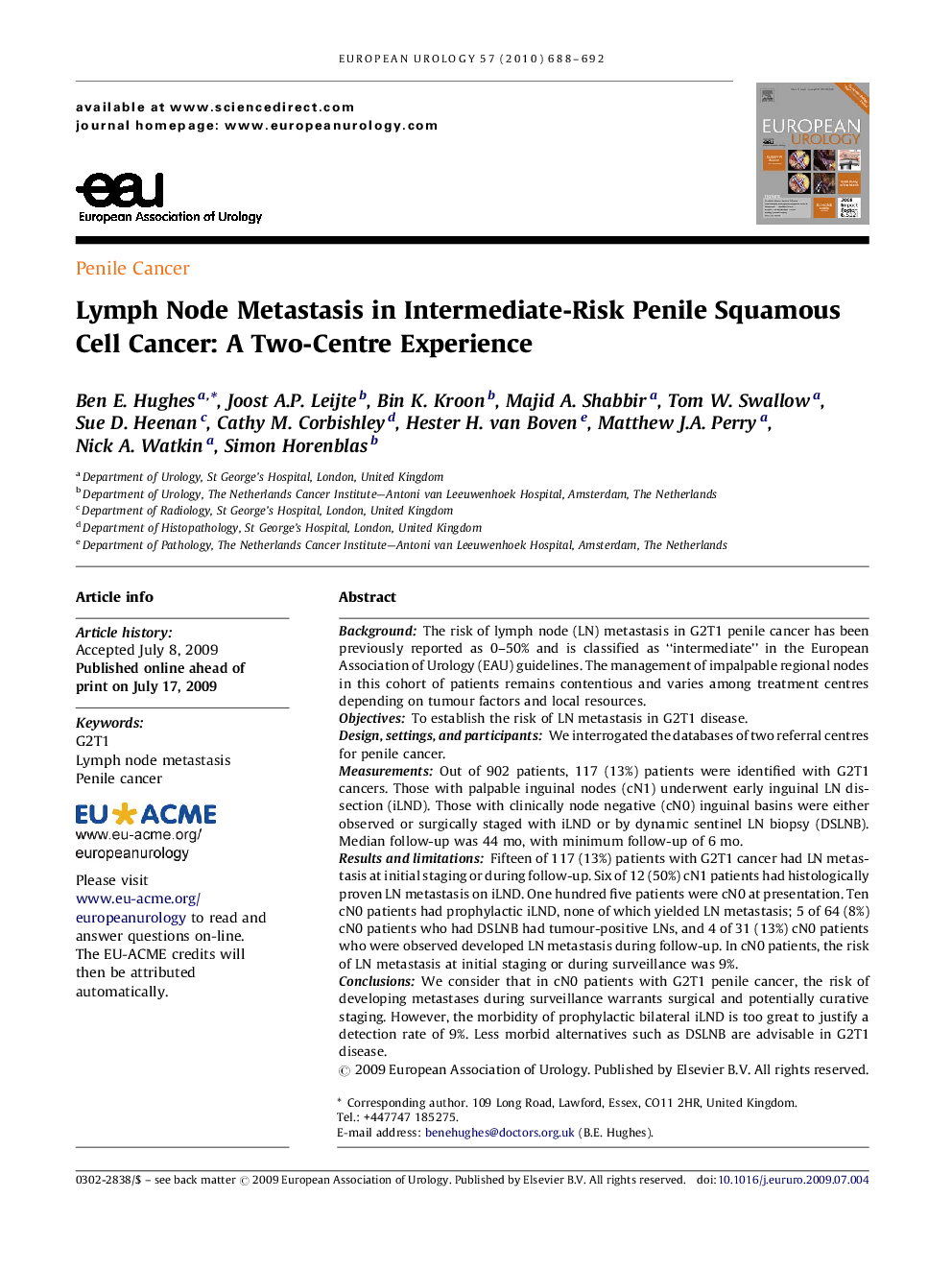| کد مقاله | کد نشریه | سال انتشار | مقاله انگلیسی | نسخه تمام متن |
|---|---|---|---|---|
| 3926811 | 1253156 | 2010 | 5 صفحه PDF | دانلود رایگان |

BackgroundThe risk of lymph node (LN) metastasis in G2T1 penile cancer has been previously reported as 0–50% and is classified as “intermediate” in the European Association of Urology (EAU) guidelines. The management of impalpable regional nodes in this cohort of patients remains contentious and varies among treatment centres depending on tumour factors and local resources.ObjectivesTo establish the risk of LN metastasis in G2T1 disease.Design, settings, and participantsWe interrogated the databases of two referral centres for penile cancer.MeasurementsOut of 902 patients, 117 (13%) patients were identified with G2T1 cancers. Those with palpable inguinal nodes (cN1) underwent early inguinal LN dissection (iLND). Those with clinically node negative (cN0) inguinal basins were either observed or surgically staged with iLND or by dynamic sentinel LN biopsy (DSLNB). Median follow-up was 44 mo, with minimum follow-up of 6 mo.Results and limitationsFifteen of 117 (13%) patients with G2T1 cancer had LN metastasis at initial staging or during follow-up. Six of 12 (50%) cN1 patients had histologically proven LN metastasis on iLND. One hundred five patients were cN0 at presentation. Ten cN0 patients had prophylactic iLND, none of which yielded LN metastasis; 5 of 64 (8%) cN0 patients who had DSLNB had tumour-positive LNs, and 4 of 31 (13%) cN0 patients who were observed developed LN metastasis during follow-up. In cN0 patients, the risk of LN metastasis at initial staging or during surveillance was 9%.ConclusionsWe consider that in cN0 patients with G2T1 penile cancer, the risk of developing metastases during surveillance warrants surgical and potentially curative staging. However, the morbidity of prophylactic bilateral iLND is too great to justify a detection rate of 9%. Less morbid alternatives such as DSLNB are advisable in G2T1 disease.
Journal: European Urology - Volume 57, Issue 4, April 2010, Pages 688–692